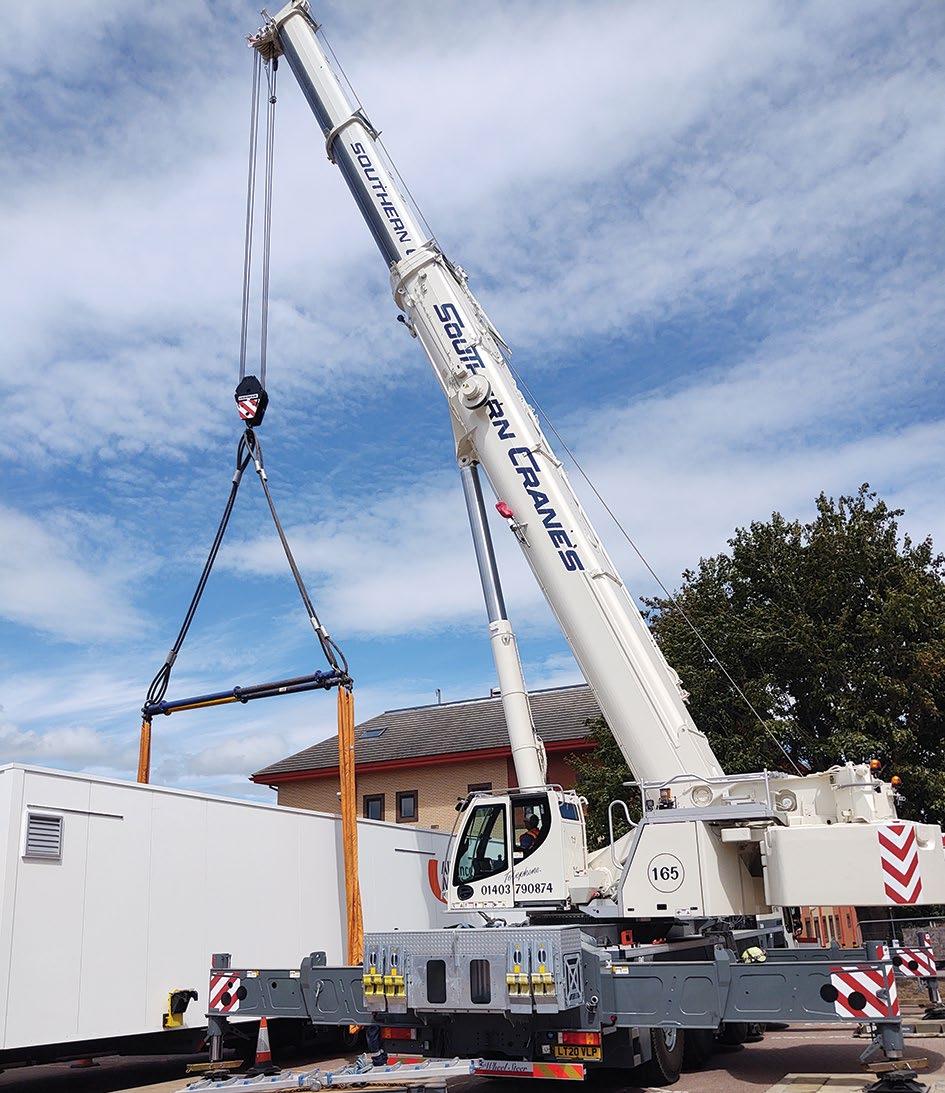Increasingly remote
c&a
The operation of machinery via remote controls has typically intended to allow operators to place themselves in the most beneficial position, in terms of safety and view of the work. With the advent of radio remote controls, operators are no longer confined to a stationary control point whether that be at the end of a trailing lead, in a cab, a platform, or at the side of a machine. More recently however it has also begun to take on a slightly wider meaning and purpose. From the ground up A new Israeli remote control technology company UltraWis has recently completed its site trials of a remote operating systems for tower cranes called WideSite. We spoke with co-founder Lior Avitan to find out how the company has adopted similar technology used in military combat systems on fighter jets and by helicopter pilots to develop what UtraWis claims is the first remotely operated tower crane system on the market. Prior to founding UltraWis in 2019 Avitan and Erez Gernitzky spent more than 30 years between them with Israel’s largest defence company Elbit Systems, working on the technology behind its helmet mounted display systems used by military pilots. Most recently, Avitan was responsible for developing night vision sensor system BrightNite, while Gernitzky spent around 20 years working on imagery processing and algorithms. Given how the move into cranes might not seem like a logical transition, Avitan explains how the idea for WideSite came to him after spotting a tower crane at work while studying for a master’s degree in 2016.
“Each day between my classes I couldn’t help noticing the tower crane, how it was being operated and the deficiencies resulting from its restricted field of view. Right away I knew we could utilise the technology used to help pilots in their cockpits to assist tower crane operators – and that’s when the idea for UltraWis was born.” Part of Incubit - Elbit Systems’ deep-tech incubator - UltraWis began adapting military grade technologies in image processing, stability, 3D modelling, and augmented reality, to allow tower crane operators to remotely control the crane from a cabin or office located on site. Less than a year in the company was granted $900,000 from Israel National Insurance Institute’s Manof Fund. Designed to support a wide range of projects that promote safety in the workplace, it recognised the potential the system could have on preventing accidents within the construction industry. Avitan said: “The Manof Fund understood that we were interested in improving the ergonomic environment of the crane operator as well as his safety and that of the team on site. The extra funds
(L-R) UltraWis founders Erez Gernitzky and Lior Avitan
remote controls
Lior Avitan (pictured) is using military grade technology to help tower crane operators
The WideSite multi sensor camera unit.
enabled us to add to our team and push forward to develop a working model for a construction site.” Designed to be installed on the jib of any make or model tower crane, WideSite combines a multi sensor camera unit with a replicated tower crane control station, two high definition screens and speakers. It has also developed a ground cabin but acknowledging that many sites will have their own space, can easily set up the control station in any building located within 300 metres of the crane. Making use of artificial intelligence and machine learning, the system constantly monitors the site and displays
WideSite allows tower crane operators to control boom movements from the ground
augmented reality graphics over the live feed to provide the operator with a wide variety of information, such as hook heights, weight of the load and the projected location of load within a variance of just 100mm. It can also detect and notify the operator of other cranes or construction equipment that might impact the operation of the crane. “We have designed WideSite to be as similar to operating a tower crane from the elevated cab as we possibly can. The addition of real time overlay graphics has been designed to be very intuitive and just as pilots no longer have to look down at the cockpit in order to fly, crane operators will have all the information they need on the screen directly in front of them.”
Outside in Given the overwhelming adoption of remote control technology in recent years the development of a system like this seems an obvious step. What is more surprising perhaps is that it has taken a company from outside the industry to develop a working solution. Explaining why this might be the case Avitan said: “Before we started developing this solution, we asked the question as to why none of the tower crane manufacturers had developed such a system yet. I think part of the reason is down to manufacturers preferring to concentrate on the tower cranes themselves and improving their capabilities but mostly I believe it is because the system requires highly advanced imagery processing and sensing software to make it a practical reality. Very few people will have the knowledge and experience that we have in this area, or the ability to implement a proper working solution.”
November 2020 cranes & access
43 41














